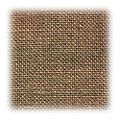Jute facts for kids
Jute is a natural vegetable fibre that comes from a plant. It's very affordable to produce, and almost as much jute is made worldwide as cotton. Jute is a type of fiber called a "bast fiber," similar to hemp and flax. Thick fabrics made from jute are known as hessian or burlap (in America). Like all natural fibers, jute can break down naturally.
The word "jute" refers to both the plant and the fiber used to create materials like burlap or gunny cloth. Jute is even used to make special camouflage suits called ghillie suits, which help people blend in with grass or bushes.
Jute plants grow easily in warm, tropical countries such as Bangladesh and India. About 90% of the world's jute comes from Bangladesh, with the rest from India. While jute is cheaper than cotton, cotton is usually preferred for making high-quality clothes. Jute is used for many different items, from bags and sacks for packaging to fancy carpets, espadrilles, and even sweaters.
The fiber comes from the bark of the jute plant. These plants are simple to grow and produce a lot of fiber from a small area. Unlike cotton, jute doesn't need many pesticides or fertilizers. Jute is one of the most affordable natural fibers available. It is second only to cotton in how much is produced and how many ways it can be used. In the industry, jute fiber is often called raw jute. The fibers are usually off-white to brown and can be 1 to 4 meters (3 to 13 feet) long. Jute is also known as the golden fiber because of its color and high value.
A Look Back: The History of Jute
Jute has been around for a very long time. Evidence shows it was used in Iran during the Bronze Age. Old records tell us that poor villagers in India used to wear clothes made from jute. Weavers used simple hand-looms and spinning wheels to make both cotton and jute fabrics. History also suggests that people in India, especially the Bengalis, have used ropes and twines made from white jute for their homes and other needs since ancient times. It was very useful for carrying grains or other farm products.
For hundreds of years, jute has been a big part of the culture in East Bengal and some parts of West Bengal. The British started trading jute in the 1600s. During the time of the British Empire, jute was even used by the military. Wealthy British jute traders made a lot of money by processing jute and selling products made from it. Many jute factories were built in Bengal by rich people from Dundee, Scotland, and the British East India Company. By 1895, the jute industry in Bengal became bigger than the Scottish jute trade. Many Scots even moved to Bengal to help set up these factories.
More than a billion jute sandbags were sent from Bengal to the trenches during World War I. They were also sent to the southern United States to bag cotton. Jute was used in fishing, construction, art, and even the arms industry. At first, jute was hard to process by machine because of its texture. But then, people in Dundee found that treating it with whale oil made it possible to use machines. The jute industry grew very quickly throughout the 1700s and 1800s. However, this trade mostly stopped around 1970 when new man-made fibers became popular. In the 21st century, jute has become important again as a crop for export around the world, especially from Bangladesh, because it is a natural alternative to synthetic fibers.
Jute is considered a very eco-friendly fiber. From the seed to the finished product, it's good for the environment. Even old jute fibers can be recycled more than once!
What Jute is Used For
Jute is used to make many things, including twine, rope, and mats. Scientists have even thought about using jute mixed with sugar to build parts for airplanes! Different products made from jute can also be found in cosmetics, medicine, and paints.
Jute is in high demand because it is cheap, soft, long, shiny, and its fibers are very uniform. It's sometimes called the 'brown paper bag' because it's often used to store things like rice, wheat, and other grains.
Jute matting is also used to help prevent floods from washing away soil. This happens while new plants are growing. For this purpose, using a natural fiber like jute that can break down naturally is very important.
After cotton, jute is the second most important vegetable fiber because it can be used in so many ways. Jute is mainly used to make cloth for wrapping large bundles of raw cotton, and to make sacks and rough fabrics. The fibers are also woven into curtains, chair coverings, carpets, area rugs, hessian cloth, and the backing for linoleum.
Even though man-made materials are replacing jute in some uses, jute's natural ability to break down is a big advantage where synthetics wouldn't work. For example, jute is used for containers to plant young trees. These containers can be planted directly into the ground with the tree, without disturbing the roots. Jute cloth is also used in land restoration projects to stop soil erosion while natural plants grow.
Images for kids













